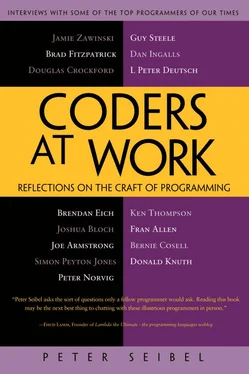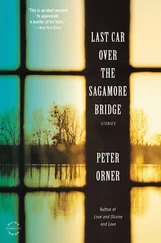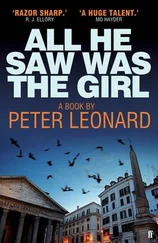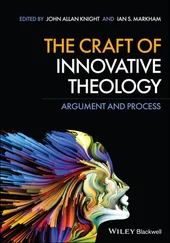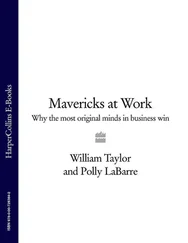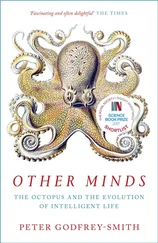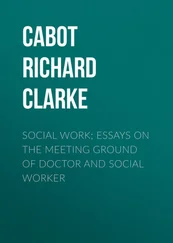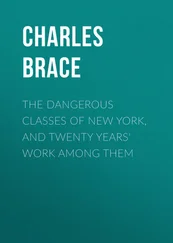Peter Seibel - Coders at Work - Reflections on the craft of programming
Здесь есть возможность читать онлайн «Peter Seibel - Coders at Work - Reflections on the craft of programming» весь текст электронной книги совершенно бесплатно (целиком полную версию без сокращений). В некоторых случаях можно слушать аудио, скачать через торрент в формате fb2 и присутствует краткое содержание. Жанр: Программирование, на английском языке. Описание произведения, (предисловие) а так же отзывы посетителей доступны на портале библиотеки ЛибКат.
- Название:Coders at Work: Reflections on the craft of programming
- Автор:
- Жанр:
- Год:неизвестен
- ISBN:нет данных
- Рейтинг книги:3 / 5. Голосов: 1
-
Избранное:Добавить в избранное
- Отзывы:
-
Ваша оценка:
- 60
- 1
- 2
- 3
- 4
- 5
Coders at Work: Reflections on the craft of programming: краткое содержание, описание и аннотация
Предлагаем к чтению аннотацию, описание, краткое содержание или предисловие (зависит от того, что написал сам автор книги «Coders at Work: Reflections on the craft of programming»). Если вы не нашли необходимую информацию о книге — напишите в комментариях, мы постараемся отыскать её.
Coders at Work
Founders at Work
Coders at Work: Reflections on the craft of programming — читать онлайн бесплатно полную книгу (весь текст) целиком
Ниже представлен текст книги, разбитый по страницам. Система сохранения места последней прочитанной страницы, позволяет с удобством читать онлайн бесплатно книгу «Coders at Work: Reflections on the craft of programming», без необходимости каждый раз заново искать на чём Вы остановились. Поставьте закладку, и сможете в любой момент перейти на страницу, на которой закончили чтение.
Интервал:
Закладка:
Seibel:Back to code beauty—that kind of haiku, origami programming is beautiful for the reason that any intricate little thing is beautiful.
Steele:Yes. But I should emphasize that that piece of Gosper’s code is beautiful not only because you can compress it in this way—one of the reasons it’s so small to begin with is because it’s based on a beautiful mathematical formula, a triple angle formula for the sine function. And that recursion can be expressed very concisely on this particular architecture because that architecture was designed to support recursion in a way that other machines of its day weren’t. So there are several different aesthetics melding together, combined in this one routine.
Seibel:You also mentioned Knuth’s TeX, which is obviously a much larger program. What is it that makes that program beautiful?
Steele:He took a very, very complicated program with lots of special cases and reduced it to a single, very simple paradigm: sticking boxes and glue together. That was an immensely critical breakthrough. It turns out to be flexible not only for typesetting text but for all manner of other things as well that have to do with laying things out visually, two-dimensionally, on a page. I wish that more GUI interfaces were based on boxes and glue for laying out buttons and things like that.
Seibel:So there is beauty to be appreciated once you understand what boxes and glue means, you can say, “Yeah, that’s a deep and righteous idea and I appreciate the beauty of that and see how it would apply outside this one program.” Is there further aesthetic quality that you get—and can only get—by reading through the source code and seeing how that theme plays out? Or is it more that you read the whole thing and then at the end you say, “Wow, that was really all based on this one simple, but not simplistic, idea.”?
Steele:It’s a combination of those. And Knuth is really good at telling a story about code. When you read your way through The Art of Computer Programming and you read your way through an algorithm, he’s explained it to you and showed you some applications and given you some exercises to work, and you feel like you’ve been led on a worthwhile journey. And you’ve seen interesting sights along the way. Wandering through the code of TeX I feel much the same way. I’ve learned some things about programming. And some parts of them are mundane and perfunctory and so forth. And other ones you say, “Wow, I didn’t think of organizing it that way.” It’s a little of each.
Seibel:At the other end of the spectrum from code beauty, software is also full of painful historical warts that we can’t get rid of, like differing lineending conventions.
Steele:Yes. We spent hours and hours in the Common Lisp committee just debating the treatment of end of line in order to accommodate both Unix, which used just newline, and the PDP-10 systems, which used CRLF. And getting the definition of newline just right so it worked on both those operating systems was a nightmare.
Seibel:So for the people who are reading this book and are going to be writing some of the software of the future, is there any way to avoid that stuff? Is there any way we can be smarter? Or is it just the nature of evolutionary design?
Steele:Yeah. And not knowing the future. If I could change one thing—this is going to sound stupid—but if I could go back in time and change one thing, I might try to interest some early preliterate people in not using their thumbs when they count. It could have been the standard, and it would have made a whole lot of things easier in the modern era. On the other hand, we have learned a lot from the struggle with the incompatibility of base-ten with powers of two.
Dan Ingalls
If Alan Kay is Smalltalk’s father, Dan Ingalls is its mother—Smalltalk may have started as a gleam in Alan Kay’s eye, but Ingalls is the one who did the hard work of bringing it into the world. Starting with the first implementation of Smalltalk, written in BASIC and based on one page of notes from Kay, Ingalls has been involved in implementing seven generations of Smalltalk from the first prototype to the present-day open source implementation, Squeak.
Originally a physicist, Ingalls started programming with Fortran, made a business selling a profiler he wrote while in grad school, and eventually found his way to Xerox PARC, where he joined Kay’s Learning Research Group, which built Smalltalk and explored the use of computers in children’s education.
While at PARC, Ingalls also invented the BitBlt operation used in bit-mapped graphics and coded it in microcode for PARC’s Alto computer, allowing the high–performance bit-mapped graphics that enabled UI innovations such as pop-up menus that we now all take for granted. (At one of Ingalls’s in-house demonstrations of the Smalltalk system, a pop-up menu caused the subject of my next chapter, L Peter Deutsch, to leap to his feet and exclaim, “Did you just do what I thought you did?”)
Now a Distinguished Engineer at Sun Microsystems, Ingalls is working on Lively Kernel, a Smalltalk-like programming environment that runs completely in the browser using JavaScript and browser-provided graphics. He received the Association for Computing Machinery Grace Murray Hopper Award in 1984 and the ACM Software System Award in 1987 for his work on Smalltalk. In 2002 he won the Dr. Dobb’s Excellence in Programming Award.
In our conversation, we talked about the importance of interactive programming environments, why it was a lucky thing he never learned Lisp, and why it’s better to build flexible, dynamic systems and then lock them down rather than building static systems and then trying to add dynamic features.
Seibel:To start at the start, how did you get involved in programming?
Ingalls:Let’s see. I grew up being an inventor in my basement, and physics was the closest I could come to that so that was my college major. I went to Harvard and there was a course on programming in Fortran, which I took.
Seibel:What years would that have been?
Ingalls:I was at Harvard from ’62 to ’66. My two programming experiences were this course on Fortran and there was a great lab in the basement of one of the buildings where I took a course on analog computers. It makes you think completely differently—you’ve got this big patch panel and then just a bunch of circuits that are integrators, differentiators—things that you can wire together to solve all sorts of problems in real time. But it began with Fortran and I loved it from the get-go. I tried to see how much shorter I could make programs, and stuff like that.
As a result I decided that maybe I was interested in electrical engineering. So I came out to Stanford in double E and took some computer-science courses there and really enjoyed that. I didn’t spend that much time with double E. I got into Don Knuth’s course and he had a graduate course on program measurement and I loved that. I actually worked on a program that would analyze other programs and dropped out of Stanford to make a business out of it. I got my master’s the next year, and then dropped out. So we’re in ’68 now, I guess.
Seibel:So it was a PhD program you dropped out of?
Ingalls:Right, in the radio science department at Stanford, which was part of double E.
Seibel:So the program you made a business out of—what was it?
Ingalls:Well, it started out with Knuth, as a part of a seminar I took. The seminar was to measure programs and look at their dynamic behavior.
Читать дальшеИнтервал:
Закладка:
Похожие книги на «Coders at Work: Reflections on the craft of programming»
Представляем Вашему вниманию похожие книги на «Coders at Work: Reflections on the craft of programming» списком для выбора. Мы отобрали схожую по названию и смыслу литературу в надежде предоставить читателям больше вариантов отыскать новые, интересные, ещё непрочитанные произведения.
Обсуждение, отзывы о книге «Coders at Work: Reflections on the craft of programming» и просто собственные мнения читателей. Оставьте ваши комментарии, напишите, что Вы думаете о произведении, его смысле или главных героях. Укажите что конкретно понравилось, а что нет, и почему Вы так считаете.
